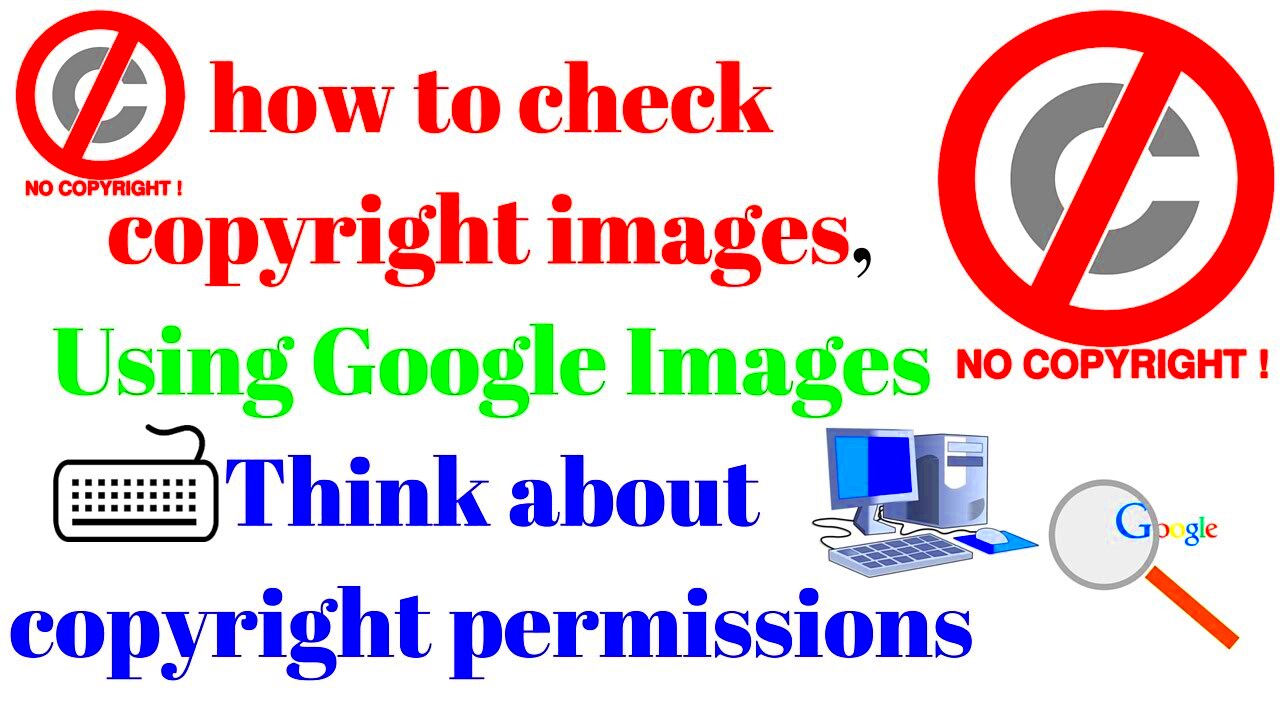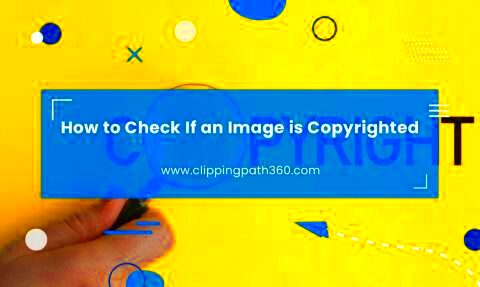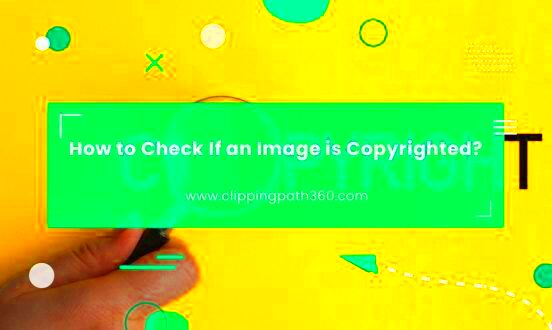When you browse the internet or create content, it’s essential to be aware of copyright laws related to images. Copyright protects the creator’s work, meaning you cannot use someone else's images without permission. The idea is simple: just like you wouldn’t want someone to steal your ideas, creators don’t want their images taken without proper credit or compensation. Understanding how to identify and handle copyrighted images is vital for content creators, marketers, bloggers, and anyone who uses images online.
Understanding Copyright Laws for Images

Copyright laws are designed to protect the creative rights of individuals and organizations. When it comes to images, the original creator automatically holds the copyright as soon as the image is created and fixed in a tangible form (like a photograph or digital file). This means the creator has exclusive rights to reproduce, distribute, and display the image. If you want to use an
- Get permission from the copyright holder.
- Pay a licensing fee if required.
- Use images that are in the public domain or have a Creative Commons license.
Using copyrighted images without proper permission can lead to legal consequences, including fines and having your content removed. It's important to always verify the image’s status before using it in your projects.
Also Read This: Recording Music from YouTube and Understanding Legal and Technical Aspects
How to Check for Copyright Information on an Image

There are several ways to check if an image is copyrighted. Here’s a simple guide to help you identify copyright information:
- Check the Image’s Metadata: Right-click on the image file and select "Properties" (on Windows) or "Get Info" (on macOS). The metadata often includes copyright details, such as the creator’s name and licensing information.
- Look for Watermarks or Copyright Text: Many photographers and creators add watermarks or text that states copyright information directly on the image. This can be a clear indication that the image is protected.
- Reverse Image Search: Use a reverse image search tool like Google Images or TinEye to find where the image appears online. This can help you trace its origin and determine if it’s copyrighted.
If none of these methods yield information, you may want to reach out to the image’s source to inquire about copyright status before using it. It's always best to be cautious to avoid infringing on someone else's rights.
Also Read This: How to Create Stunning Black and White Photos
Using Image Search Tools to Identify Copyrighted Content

Image search tools are incredibly helpful when you need to check if an image is copyrighted. These tools can help you trace the origin of an
Here’s how you can use image search tools:
- Google Images: Go to the Google Images search page, click on the camera icon in the search bar, and either paste the image URL or upload the image file. This will show you where else the image has been used on the internet.
- TinEye: This is another reliable reverse image search tool. You can upload an image or paste a URL, and TinEye will find exact matches or similar images online. It also tells you when the image was first indexed.
- Social Media Search Tools: Platforms like Instagram and Pinterest offer image-based search features that can help you identify the source of an image used on their platforms.
Using these tools helps you understand the image's origins, whether it's copyrighted, and how to seek permission if necessary. It’s a good idea to run a reverse image search before using any image to avoid legal issues.
Also Read This: Creating an Impressive 3D Graphic Portfolio on Behance
Reviewing Image Licensing and Usage Terms

Once you’ve found an image you want to use, the next step is to check its licensing and usage terms. Licensing is the agreement between the creator and the user, defining how an image can be used. There are several types of image licenses, and each one has different rules regarding usage, distribution, and modification.
Here’s a breakdown of common image licenses:
| License Type | Description |
|---|---|
| Royalty-Free | Allows you to use the image without paying royalties, but it often comes with certain restrictions (e.g., not for commercial use or not for redistribution). |
| Creative Commons | Images licensed under Creative Commons are free to use but may require attribution. There are different types of Creative Commons licenses, so it’s important to check the specific conditions. |
| Rights Managed | Images under a rights-managed license are more restrictive and often require specific permissions for each use. You’ll typically need to pay a licensing fee for each usage. |
| Public Domain | Images in the public domain are free to use without restrictions because they are no longer under copyright protection. |
Before using an image, carefully read the licensing terms. Make sure that the image fits your intended use and that you comply with all the requirements, such as giving credit or avoiding certain modifications.
Also Read This: How 123RF Enhances Creative Workflows
What to Do if You Find a Copyrighted Image
If you find that the image you want to use is copyrighted, there are a few steps you can take to avoid legal trouble:
- Request Permission: The most straightforward way to use a copyrighted image is by contacting the creator or copyright holder and asking for permission. Be clear about how you plan to use the image and whether you are willing to pay a licensing fee.
- Look for a License: Check if the image is available for licensing. Many photographers and agencies offer images with specific usage rights for a fee. Websites like Shutterstock, Getty Images, and Adobe Stock offer images for purchase with clear usage rights.
- Use Public Domain or Creative Commons Images: If you can’t get permission or don’t want to pay for a license, look for images that are in the public domain or available under Creative Commons licenses. Websites like Pixabay, Unsplash, and Pexels provide free images that are safe to use, often with few restrictions.
- Consider Using Your Own Images: The safest option is always to create your own content. By doing so, you avoid copyright issues altogether.
Ignoring copyright can lead to legal consequences, including fines and having your content taken down. Always respect the rights of image creators and ensure you have the proper permissions before using their work.
Also Read This: How Much Do Getty Images Cost
Best Practices for Avoiding Copyright Infringement
Copyright infringement can be a serious issue, leading to legal action and financial penalties. As a content creator or business owner, it's crucial to follow best practices to avoid using copyrighted material without permission. Here are some practical tips to ensure you're staying within the boundaries of copyright law:
- Use Royalty-Free and Licensed Images: Always choose images that are licensed for your intended use. Look for images with clear, well-defined licenses that specify what is and isn't allowed. Websites like Shutterstock, Getty Images, and Adobe Stock offer high-quality, licensed images.
- Give Proper Credit: If you're using Creative Commons images or images with attribution requirements, make sure to credit the original creator. This is usually outlined in the license agreement and helps you stay compliant.
- Consider Using Public Domain or Creative Commons Images: Public domain images are free to use without restrictions. Similarly, Creative Commons images often allow for free use with specific attribution. You can find these on platforms like Unsplash, Pixabay, and Pexels.
- Obtain Permission: If you want to use an image that isn’t free or in the public domain, always contact the creator for permission. This might involve negotiating a licensing agreement or paying for usage rights.
- Create Your Own Content: The safest way to avoid copyright issues is by creating original images. By doing this, you own the content and don’t have to worry about copyright violations.
By following these best practices, you can protect yourself from copyright infringement and ensure your content remains legally compliant.
Also Read This: How Many Images Fit in 75 MB?
FAQ
1. How can I know if an image is copyrighted?
To check if an image is copyrighted, you can look for watermarks, review the metadata, or use reverse image search tools like Google Images or TinEye to trace its origin.
2. Can I use any image I find on the internet?
No, not all images on the internet are free to use. Always check the licensing information or seek permission from the creator before using an image. If the image is protected by copyright, you’ll need to get a license or find alternatives like public domain images or Creative Commons content.
3. What is the risk of using copyrighted images without permission?
Using copyrighted images without permission can lead to legal consequences, including fines, removal of content, and even lawsuits. It’s essential to follow copyright laws to avoid these risks.
4. Where can I find free images to use on my website?
There are several websites where you can find free images that are either in the public domain or have Creative Commons licenses. Some popular sites include Unsplash, Pexels, and Pixabay.
5. Do I need to pay for all images I use?
No, you don’t need to pay for every image. Many websites offer free images under licenses like Creative Commons. However, for commercial use or exclusive rights, you may need to purchase a license from a stock photo site.
Conclusion
Copyright laws are in place to protect the work of creators and ensure they are compensated for their efforts. As a content creator or business owner, it's essential to understand how to check if an image is copyrighted and how to properly use images in your work. Always make sure to follow best practices like using licensed images, giving proper attribution, and, when in doubt, asking for permission or using free resources like public domain or Creative Commons images.
By taking these steps, you can avoid legal troubles and build a respectful relationship with the creators whose work you use. Remember, when it comes to copyright, it’s always better to be safe than sorry!

 admin
admin








